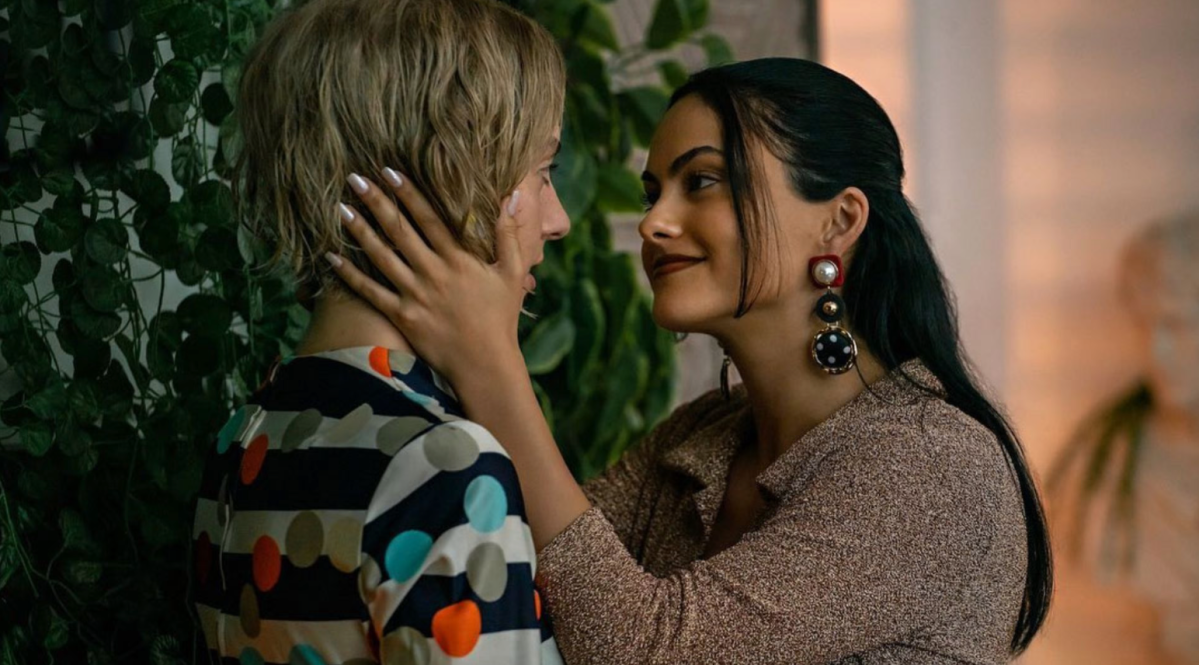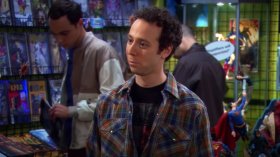Last Friday, Netflix released its newest teen film, Do Revenge, a comedy about an unlikely pair of high schoolers who unite take revenge on each other’s tormentors. Based partly on Agatha Christie’s Strangers on a Train, the two lead actors are Stranger Things’ Maya Hawke and Riverdale’s Camila Mendes, aged 24 and 28 respectively.
This latest discrepancy between actor and character age – a phenomenon known as Dawson casting – adds to a long list of adult actors playing teenage characters, with some famous examples including:
- Stockard Channing (33) as Rizzo (17) in Grease.
- Cory Monteith (27) as Finn (16) in Glee.
- Henry Winkler (27) as ‘The Fonz’ (16) in Happy Days.
- Alan Ruck (29) as Cameron (17) in Ferris Bueller’s Day Off.
A notable and welcome exception to this trend came in the shape of More Than This, the recent comedy series written by Australian teenager Olivia Deeble. As ScreenHub reviewer Mel Campbell wrote in March:
Deeble developed More Than This with her childhood friend, 18-year-old trans nonbinary actor Luka Gracie, and wrote its six episodes in 2020, while completing Year 12 in Melbourne’s lockdown. Paramount+ has promoted More Than This for its authenticity: ‘written by teens, for teens’. While high-school dramas are notorious for casting actors much older than their characters, the main cast here is age-accurate – except Kamil Ellis, who is 21.
So, why don’t more shows follow the More Than This model?
Maybe teenagers just can’t act?
Maybe teenagers haven’t properly learned the trade or been to drama school for enough years, so if a 20-year-old can play the role better, why not cast the better actor?
This would be an OK answer if we didn’t know of teens who can seriously act – Molly Ringwald and Michael Hall were 15 and 16 in Sixteen Candles and The Breakfast Club respectively, and actors as young as ten have won Oscars for their performances. So, if kids and teenagers can act, it must be about more than skill.
Working hours and labour laws
The most frequently cited explanation for Dawson casting is that labour laws make it too difficult to work with child and adolescent actors. Child actors can only work a limited number of hours per day, and their schedules include mandated education.
Read: Stranger Things Season 4 review: what’s wrong with a little nostalgia?
In the case of young children, a common workaround on TV shows is to use twins to play the same role, a trick used in shows such as The X Files, Friends, Modern Family and Sons of Anarchy.
Still, subbing in adult actors for teens is always going to be easier and allow for longer, cheaper and more efficient days on set. And what harm does it do?
Plenty.
Beauty and bodies
Teens on TV, and the adult actors who play them, don’t look anything like the real teenagers they are supposed to represent. With their flawless skin and adult bodies, these characters and actors set expectations for teenagers that are impossible to fulfil. Indeed, in those fragile years, when body insecurity and vulnerability are arguably at their highest, the film and TV industry can only fuel those anxieties with unachievable images of ‘perfect’ faces and bodies.
Read: More Than This review: sleek and sunny TV
While some have tried to claim that casting pubescent actors messes with continuity – voices deepen, bodies change, pimples come and go – shouldn’t there be a place for representing this? I know that film productions need to control for these things to keep their story linear during editing, but wouldn’t it be nice to see a show where a real teen-aged actor had blemished skin and a body that changed over the course of a season, maybe one actor whose voice broke and squeaked before it dropped?
I, for one, think it would be really powerful for a network or studio to sacrifice the aesthetics of beautiful adult bodies in favour of the perfectly imperfect and changing faces and bodies of teens.
Ah, yes, and while we’re on bodies …
Adult themes and sexual content
If you’re familiar with the kinds of TV made about teens, one regular occurrence is: sex. Most of these shows are full of teenagers having sex with each other, with teachers and other adults, and just generally performing sexiness for the screen.
Obviously, there are very serious ethical concerns about casting a minor in this kind of show, and an adolescent actor should never be sexualised in this way for television, but then again, maybe the fact that these scenes can’t be accurately filmed means they shouldn’t really be on our televisions.
As outlined on the website TV Tropes:
is generally illegal to show even simulated sex on film (including animation in many countries) unless all of the involved individuals are at least 18 years of age. Having adults play the characters allows the filmmakers to depict various behaviours on camera that would get them arrested if even one of the actors turned out to be 17 or younger.
The objectification and explicit sexualisation of (pretend) adolescents and high schoolers is incredibly uncomfortable and morally dubious. At worst, it pressures real teens into having sexual encounters they aren’t ready for and normalises exploitative sexual relationships with minors.
Read: Paper Girls: a 1980s sci-fi with lots of heart
If you’re determined to depict a world full of sex, drugs and rock & roll, why not age your characters up a couple of years, and show them in colleges and early adulthood? There’s no reason the characters in Euphoria, for example, need to be in high school. So why not cast adult actors the same age as your adult characters, and film those scenes without sexualising (pretend, and by extension, real) minors?
Sadly, I can’t really imagine a world in which the typical high-school drama casts a 16-year-old who is more concerned with her acne than she is with sex or parties – and that, as far as I’m concerned – is a pity.
Do Revenge is currently streaming on Netflix.





